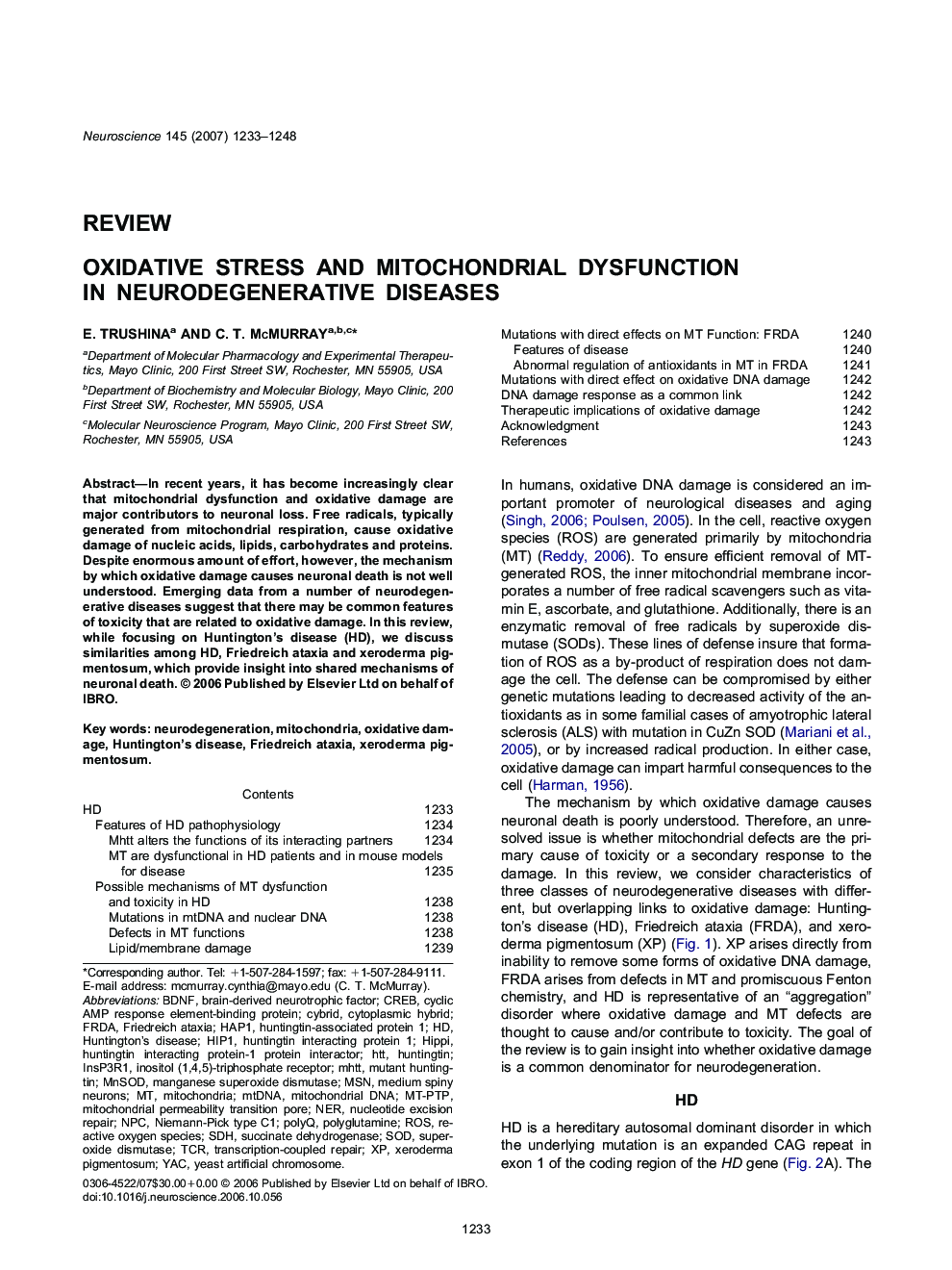| Article ID | Journal | Published Year | Pages | File Type |
|---|---|---|---|---|
| 6278453 | Neuroscience | 2007 | 16 Pages |
Abstract
In recent years, it has become increasingly clear that mitochondrial dysfunction and oxidative damage are major contributors to neuronal loss. Free radicals, typically generated from mitochondrial respiration, cause oxidative damage of nucleic acids, lipids, carbohydrates and proteins. Despite enormous amount of effort, however, the mechanism by which oxidative damage causes neuronal death is not well understood. Emerging data from a number of neurodegenerative diseases suggest that there may be common features of toxicity that are related to oxidative damage. In this review, while focusing on Huntington's disease (HD), we discuss similarities among HD, Friedreich ataxia and xeroderma pigmentosum, which provide insight into shared mechanisms of neuronal death.
Keywords
SDHMnSODFRDAMSNPolyQNPChttTCrHIP1mHTTNiemann-Pick Type C1Hap1YACCREBBDNFMitochondrial DNANERxeroderma pigmentosumROSOxidative damagemitochondrial permeability transition poreHuntington’s diseaseTranscription-coupled repairnucleotide excision repairNeurodegenerationmtDNASODmanganese superoxide dismutaseSuperoxide dismutasesuccinate dehydrogenaseCybridBrain-derived neurotrophic factorFriedreich ataxiaMitochondriamedium spiny neuronsHuntingtinmutant HuntingtinHippicyclic AMP response element-binding proteinhuntingtin-associated protein 1PolyglutamineYeast artificial chromosomeReactive oxygen species
Related Topics
Life Sciences
Neuroscience
Neuroscience (General)
Authors
E. Trushina, C.T. McMurray,
